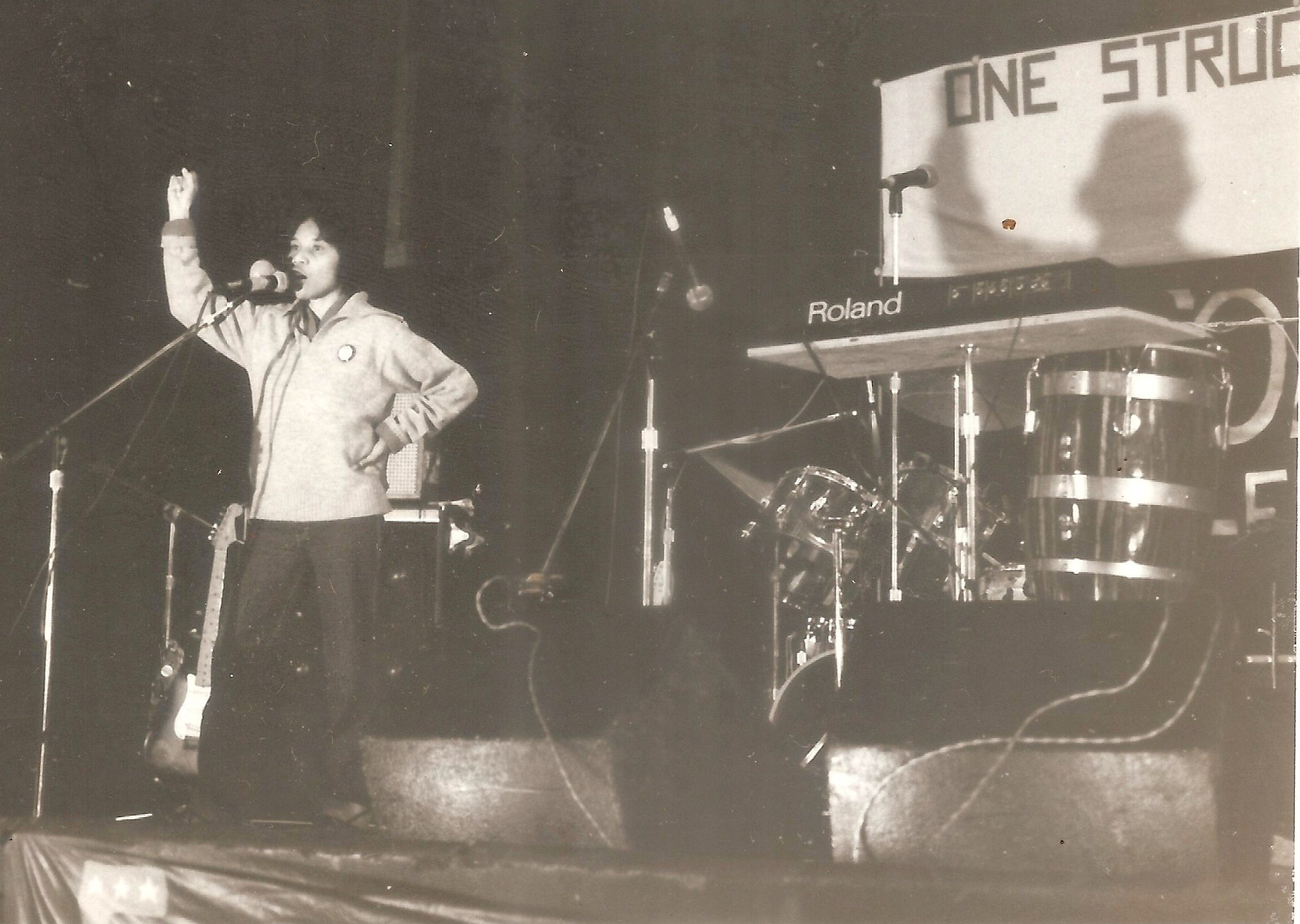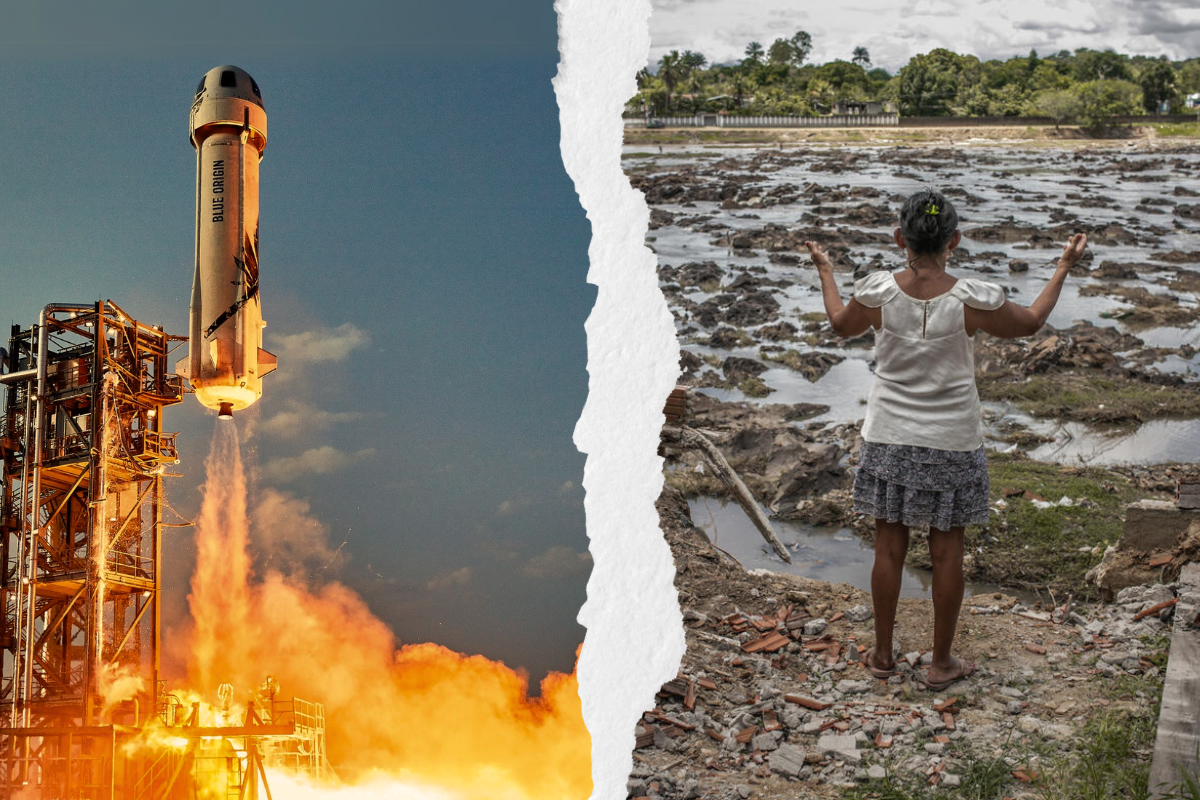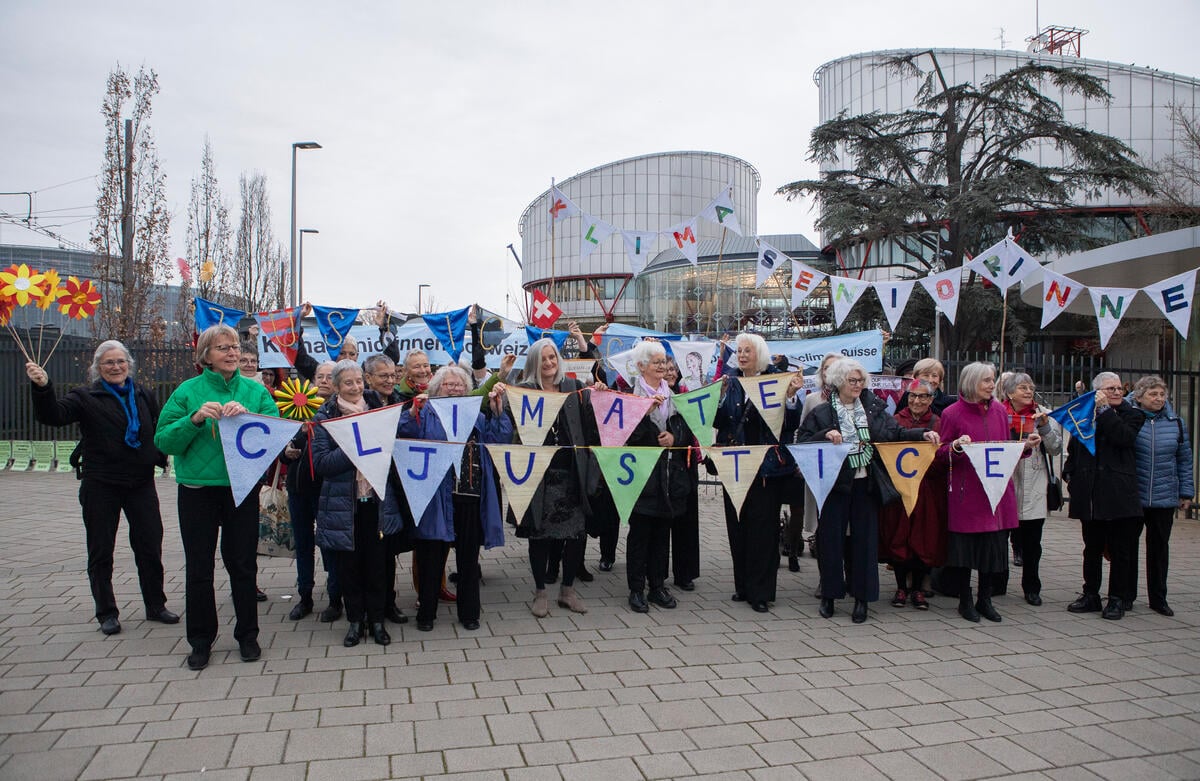Last year was the year the future showed up.
In September 2019, streets in over 180 countries surged with colour and creativity as more than seven million people, led by youth, left their schools, homes, and workplaces to demand world leaders take action on climate.
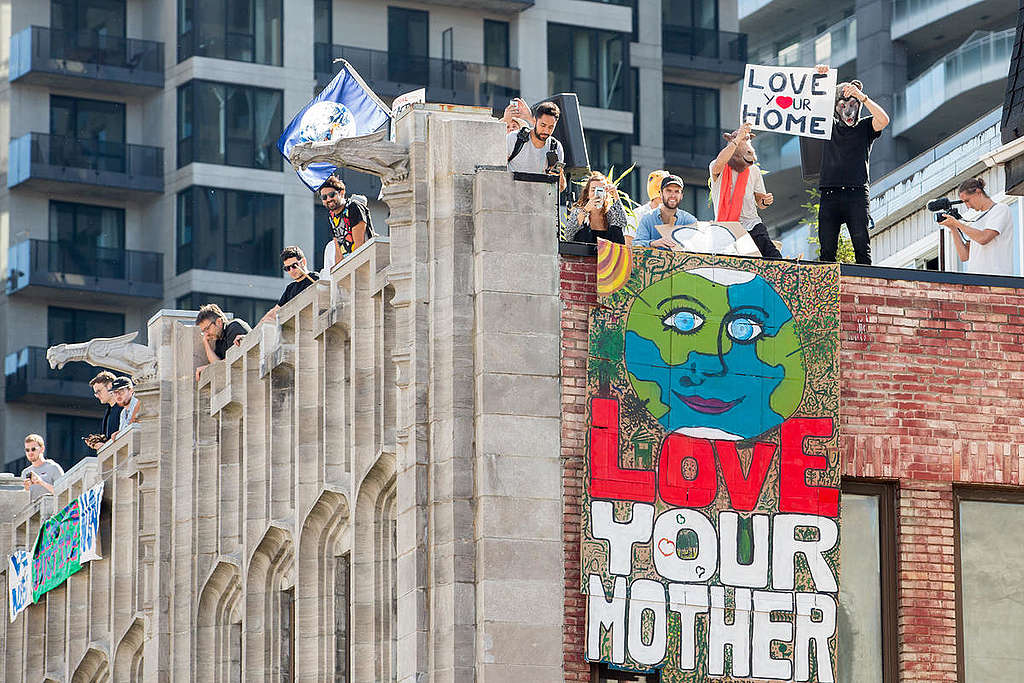
This movement of millions, driven by groups like Fridays For Future, saw young people leading the charge, abandoning their classrooms for the day in defiance. It reawakened a movement, inspired solidarity from climate groups around the world, and has since been coined the largest global climate protest in history. And it’s only just turned a year old.
The power and size of these global demonstrations has changed the way that people think about climate change and what it means to be an activist. Local struggles have been connected and amplified. Climate leaders have joined forces, and strategies have been shared across seas and borders.
This April, the school strike movement will continue, but from home. COVID-19 means people across the world are finding innovative ways to take action. On April 24, a global day of climate strikes will kick off – digitally. It may look different, but the demands remain the same: a united call for governments everywhere to urgently enact green and just legislation, like the Green New Deal.
Keep your eyes peeled for digital actions, like online debates with influential leaders that continue to challenge business as usual. Use your creativity to make climate demands over social media and get your friends and family involved too.

These are three ways the school strike movement has already changed us for the better.
1. Innovation
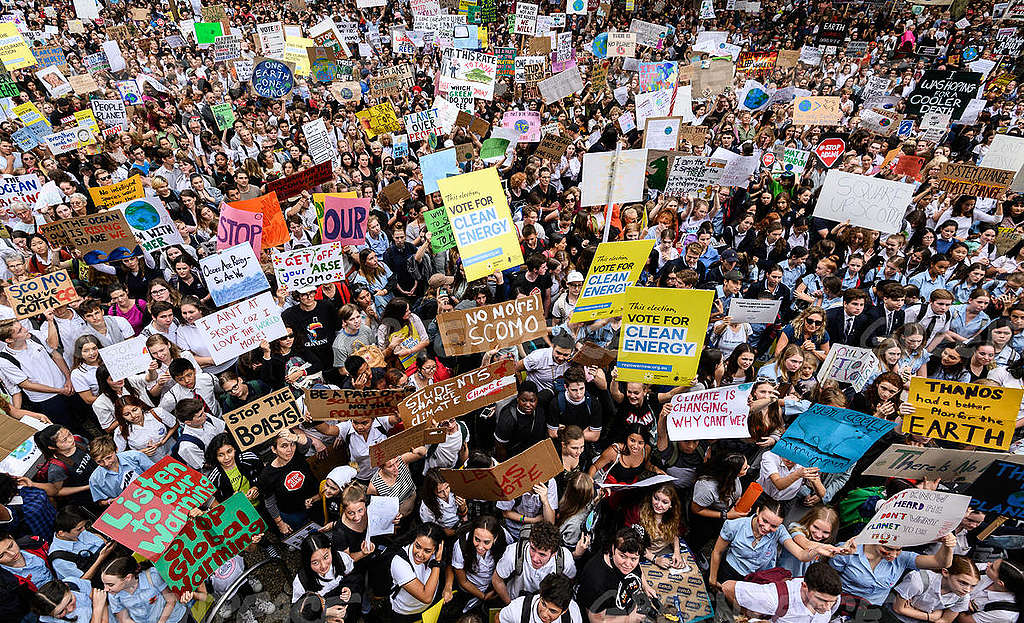
Photo by James Gourley/Getty Images © James Gourley / Getty Images
This renewed movement has been enhanced by the use of innovative technology that connects school strikers no matter where they are. WhatsApp groups, video calls, webinars, TikTok challenges, Instagram stories, Facebook Live and channel sharing have all been leveraged to create a constant global stream of content that feels fresh and new. As a result, the movement has sparked coverage and debate that has forced politicians and industry leaders to re-evaluate their response to the climate crisis we all face.
2. Solidarity
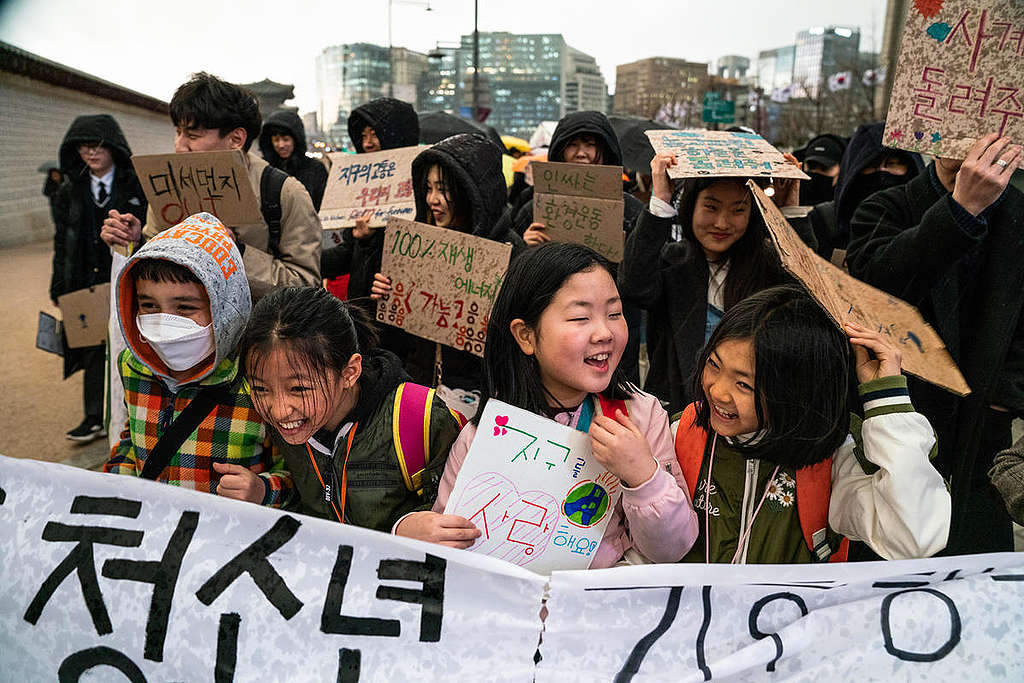
As millions hit the streets last September, the world watched something unique unfold – a global movement that has started to span generations and beliefs, race and culture.
People don’t need to share the same background – they stand in solidarity, wherever and however they can. In Moscow organisers got around bans on mass demonstrations by tag-teaming protests, with activists taking turns to hold banners for five minutes before being replaced by the next.

In Kabul, armoured personnel were deployed to protect about 100 young people as they marched through the streets. In Nairobi, students wore outfits made from plastic bottles in response to the dangers of plastic waste, a major threat to people in the developing world. Protests took place across Latin America, from Mexico City to Buenos Aires.
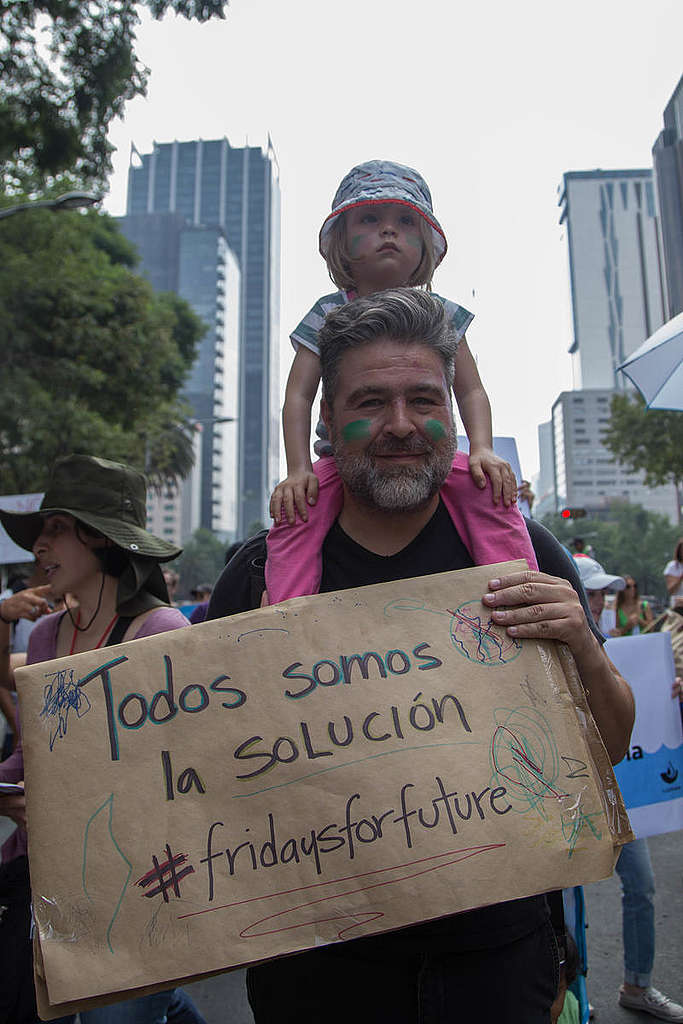
Around the world, unions and NGOs joined together to support the youth-led movement. Grandparents went to the strikes, even if it meant taking multiple buses. Teachers left classrooms to stand alongside their students, and parents left workplaces, moved by the growing tide of people standing up for their children’s future.
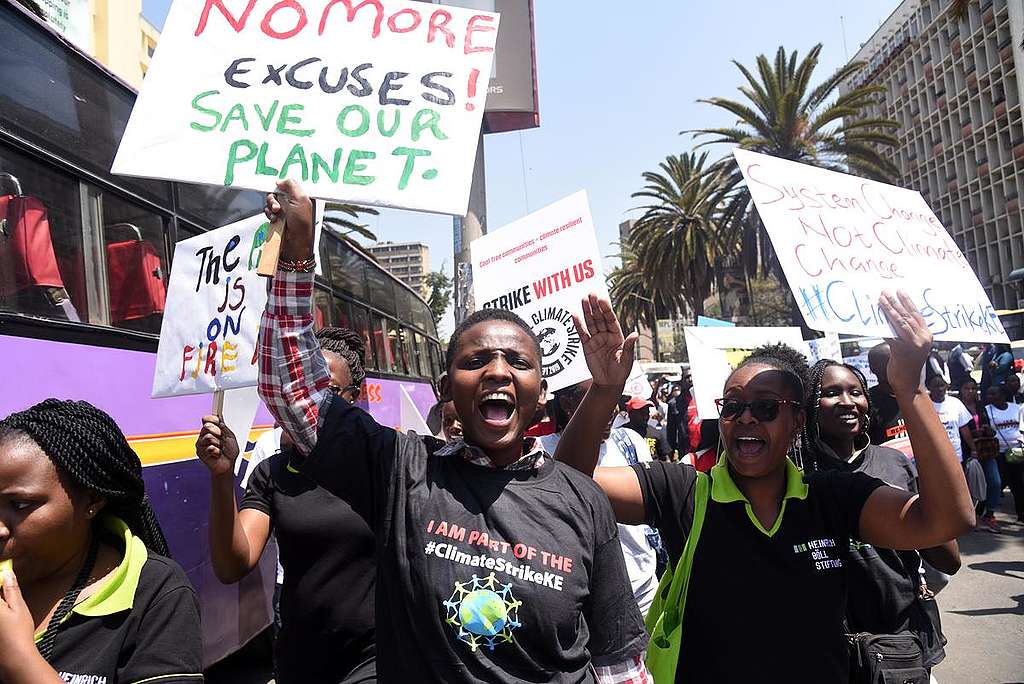
3. Joy
Colour, creative banners, music and dance have been staples of the school strike movement, and that’s part of its appeal. So often activism can be earnest, but the youth have shown the world that a revolution without dancing ain’t worth having, and that saving the world can be done with a smile.
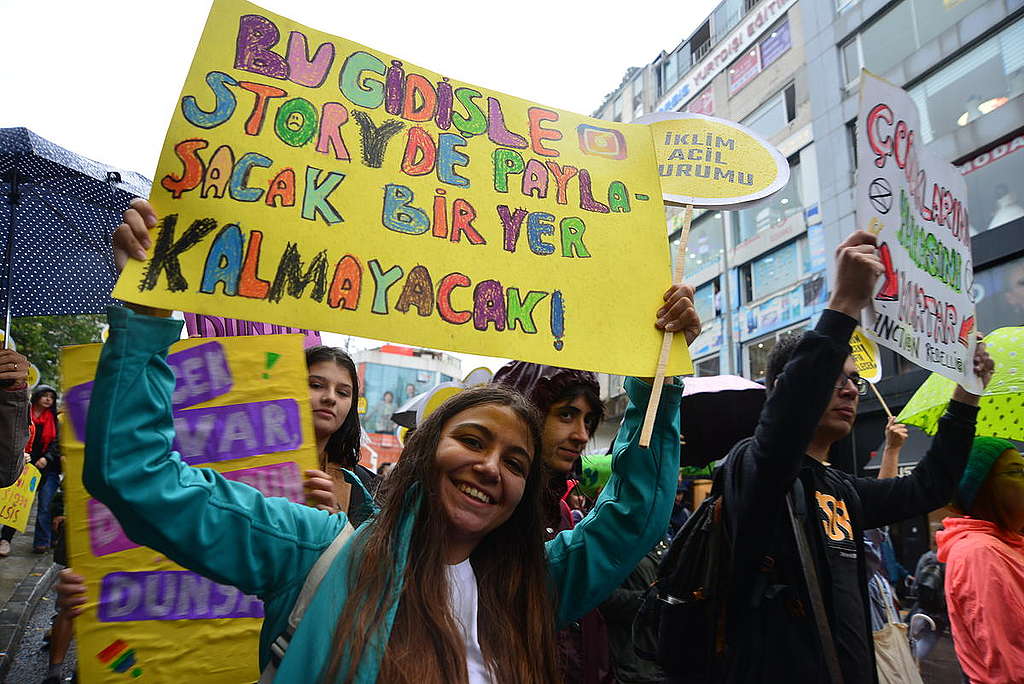
If we’re going to paint a picture of our future, why not do it with flair and style?
School strikes 2020 and beyond
Things have changed a lot since last September. COVID-19 may have brought the world to a standstill, but it’s also shown us that governments and people can rapidly adapt and unite to find new ways of doing things in the face of existential threats.
Let’s amplify these messages and demands, and urge governments and world leaders to direct our resources into rebuilding a fairer and more resilient system that puts people and planet first. The more we are, the louder we will be this April 24th.
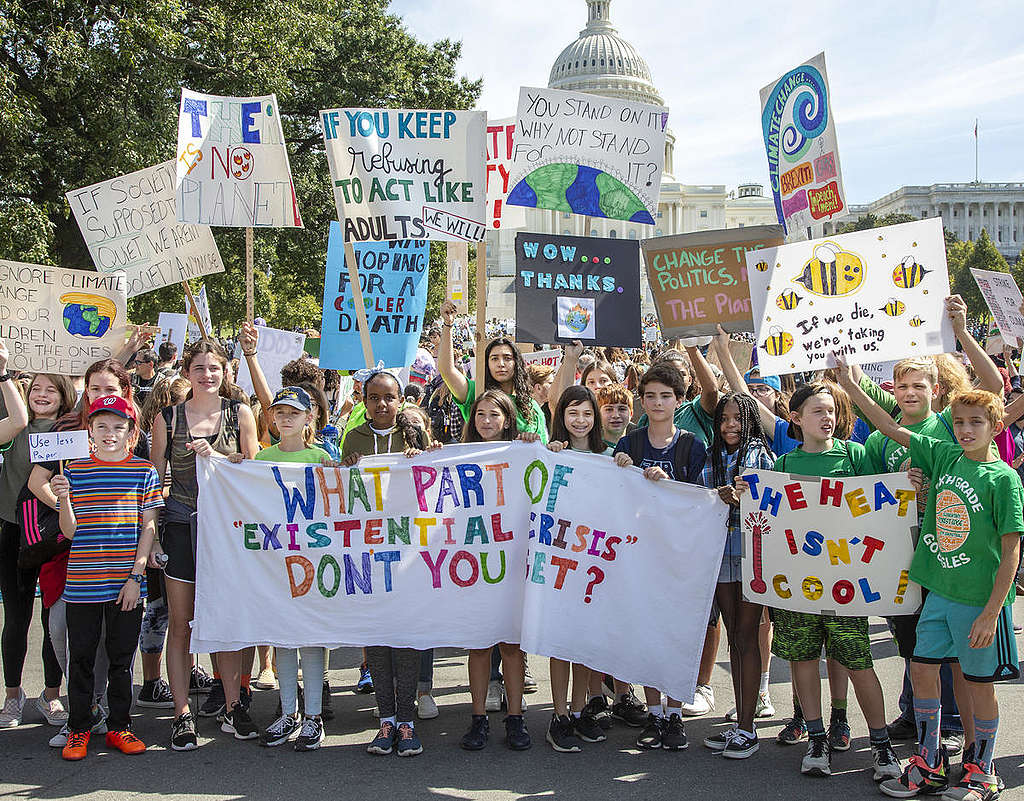
Let’s make this the year of millions more.
Agustin Maggio is a campaigner with Greenpeace USA
Español
Tres formas en las que los jóvenes han revolucionado el movimiento climático
El 2019 fue el año en que el futuro llegó.
En septiembre, las calles de 180 países alrededor del mundo se llenaron de color y creatividad, cuando más de siete millones de personas, lideradas por la juventud, dejaron las escuelas, sus hogares y sus lugares de trabajo para demandar a los líderes del mundo acciones sobre el cambio climático.

Este movimiento de millones, impulsado por grupos como Fridays For Future, nos ha mostrado a jóvenes liderando, abandonando desafiantes sus aulas por un día. Hizo renacer un movimiento, inspiró la solidaridad de los grupos climáticos de todo el mundo y desde entonces ha sido considerado como la mayor protesta climática mundial de la historia. Y solo acaba de cumplir un año.
El poder y la dimensión de estas manifestaciones globales ha cambiado el modo en que las personas piensan sobre el cambio climático y lo que significa ser activista. Los reclamos locales han sido conectados y amplificados. Los líderes climáticos han unido fuerzas y diversas estrategias han sido compartidas abiertamente sin contemplación de fronteras.
Este abril, el movimiento climático liderado por la juventud continuará, pero desde casa. La pandemia del COVID-19 ha llevado a las personas en todo el mundo a encontrar formas innovadoras de tomar medidas. El 24 de abril, comenzará un día mundial de huelgas climáticas, que se llevará a cabo digitalmente. Puede parecer diferente, pero las demandas siguen siendo las mismas: un reclamo unificado para que los gobiernos de todo el mundo promulguen con urgencia una legislación verde y justa, como el New Deal verde.
Mantente atento a las acciones digitales, como los debates con líderes influyentes. Usa tu creatividad para hacer demandas climáticas en tus redes sociales y haz que tus amigos y familiares participen también.

Estas son tres formas en las que el movimiento climático de huelga escolar ya nos ha cambiado para mejor.
1. Innovación

Este movimiento ha sido realzado por el uso de tecnología innovadora que conecta a los huelguistas climáticos sin importar dónde se encuentren. Los grupos de WhatsApp, las videollamadas, los seminarios web, los desafíos de TikTok, las historias de Instagram, Facebook Live y el intercambio de canales han sido aprovechados para crear un flujo global constante de contenido. Como resultado, el movimiento ha generado gran cobertura y debate, lo que ha obligado a los políticos y líderes de la industria a reevaluar su respuesta ante la crisis climática que todos enfrentamos.
2. Solidaridad

Cuando millones tomaron las calles el septiembre pasado, el mundo observó cómo se desarrollaba algo único: un movimiento global que comenzó a abarcar diferentes generaciones, creencias y culturas.
La gente no necesita compartir la misma procedencia: se solidarizan mutuamente, donde sea y como puedan. En Moscú, los organizadores evitaron las prohibiciones de manifestaciones masivas mediante protestas en equipo, y los activistas se turnaron para sostener pancartas durante cinco minutos antes de ser reemplazados por el siguiente grupo.

En Kabul, se desplegó personal blindado para proteger a unos 100 jóvenes mientras marchaban por las calles. En Nairobi, los estudiantes vestían atuendos hechos de botellas de plástico en respuesta a los peligros de los desechos plásticos, una gran amenaza para las personas en países en vías de desarrollo. Las protestas también tuvieron lugar en toda América Latina, desde la Ciudad de México hasta Buenos Aires

En todo el mundo, los sindicatos y las ONG se unieron para apoyar el movimiento dirigido por los jóvenes. Los abuelos fueron a las huelgas, incluso si eso significaba tomar varios autobuses. Los maestros abandonaron las aulas para marchar junto a sus alumnos, y los padres abandonaron los lugares de trabajo, conmovidos por la creciente ola de personas que defiende el futuro de sus hijos.
3. Alegría
Colores, carteles creativos, la música y la danza han sido elementos básicos del movimiento climático liderado por jóvenes, y eso es gran parte de su atractivo. Muy a menudo, el activismo puede ser serio, pero los jóvenes le han demostrado al mundo que no vale la pena tener una revolución sin bailar, y que salvar el mundo se puede hacer con una sonrisa.

Si vamos a pintar una imagen de nuestro futuro, ¿por qué no hacerlo con estilo?
Huelgas climáticas durante el 2020 y qué esperar de aquí en adelante
Las cosas han cambiado mucho desde el pasado septiembre. La pandemia del Covid-19 puede haber paralizado el mundo, pero también nos ha demostrado que los gobiernos y las personas pueden adaptarse y unirse rápidamente para encontrar nuevas formas de hacer las cosas frente a las amenazas existenciales.
Amplifiquemos estos mensajes y demandas, e instemos a los gobiernos y a los líderes mundiales a que dirijan nuestros recursos a la reconstrucción de un sistema más justo y resiliente que priorice a las personas y al planeta. Cuanto más seamos, más fuerte se oirá nuestro reclamo este 24 de abril.
Hagamos de este, el año de muchos millones más.

Agustin Maggio es campañista en Greenpeace USA

